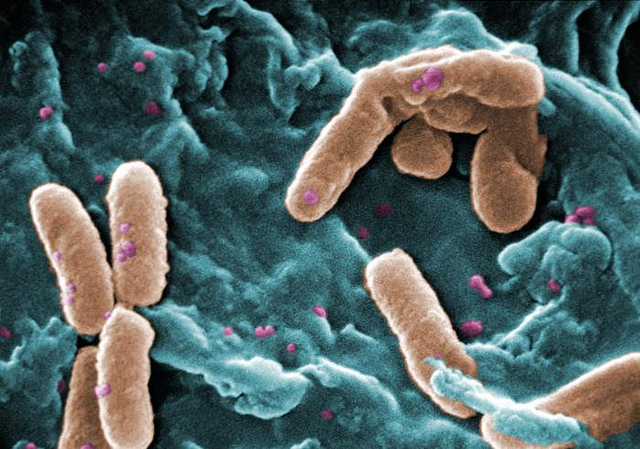The language of biofilms

Every once in awhile, communities form. Collections of similar or diverse things come together, and in unison strive for a common goal. It is the same for mice, men, and bacteria. Humans do it and build nations. Bacteria do it and build biofilms.
Dental plaque, the slimy coating on pipes and tanks, algal mats on a still lake — are all different types of biofilms. Biofilms for us are a nuisance because they colonise medical devices implanted in the human body. They can be used, however, in treating sewage, industrial waste, or contaminated soil.
When a biofilm forms, it is far from random. At its leading edge — the biofilm has purpose and direction. Imagine it as an invading army sending out the vanguards toward an unexplored territory. Highly coherent groups of bacteria migrate across the surface — swarming as one. As they advance, they create furrows for those bacteria at the back to follow. The vanguards carve out a network of trails — one that will eventually guide the exodus — the mass transit of following bacteria towards the leading edges of the biofilm.
Pseudomonas aeruginosa — the bacteria they use to eat up oil spills — is able to colonise many natural and artificial environments. It thrives on most surfaces, and easily causes a problem for implanted medical equipment like catheters. Individual bacteria show distinctive multicellular behaviour. When they grow, patterns and order emerge from seeming chaos. Australian scientists, publishing in the Proceedings of the National Academy of Sciences, describe the methods they used to visualise movements of individual bacteria, and to characterise the order within. Researchers had to develop sophisticated computer algorithms to visualise, identify and track individual bacteria. Carrying out a time lapse recording of bacteria at one frame every 2 seconds, and visually inspected a 1000-frame time series (download the movie).
As the biofilm expands there is an almost constant streaming of cells that migrate from the main biofilm along the trail network into rafts of cells at the leading edge. Every once in awhile, the following bacteria (a small group of anywhere between 2 and 9 cells) will break away from the beaten track, to eventually create an interconnected furrow system. This is where the mass transit of bacteria plays an important part. The continuous supply of cells essentially bulldozes its way through the furrow to forge a new path. Eventually, criss-crossing its way through more furrows.
With this constant flow of microorganisms there is one worry — traffic jams. Something needs to coordinate all the cars along the motorway. Multicellular behaviour in bacteria are often controlled via chemical signaling systems such as quorum sensing. Not in this case. In the case of Pseudomonas aeruginosa the multicellular community of biofilms are embedded in a self-produced polymeric matrix comprised of polysaccharides, proteins, and extracellular DNA.
Adding a DNA degrading enzyme to the experiment decreased the expansion of the biofilm and stopped the formation of the intricate network of trails. The extracellular DNA helps the efficient trafficflow throughout the furrow network by making sure all the cells are aligned in the correct way — therefore avoiding traffic jams and keeping the mass transit of cells to the frontline flowing.
In this situation, the information coded in the DNA is irrelevant. The DNA acts more like a lubricant to make the snow-plowing bacteria work more efficiently.
The final fully formed biofilm contains channels in which nutrients can circulate. We already know that cells in different regions of the biofilm also exhibit different patterns of gene expression — something more akin to tissues and organs in higher organisms — where closely packed cells work together and create a network in which minerals can flow. They become like cities with motorways.
Biofilms talk. The language they use is important to grow, advance, and eventually establish colonisation.
Image — source
 Follow
Follow